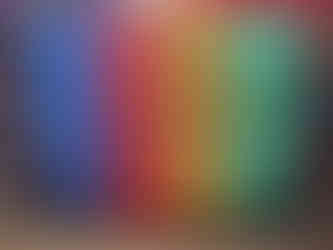Printmaking Legends
- Ashley Jager
- May 28, 2021
- 3 min read
Updated: Nov 23, 2021

A young king crept through the palace in the stillness of night searching for the sacred room containing the “eye of kingship” that could unlock the curse over the kingdom. He tiptoed down the hall until he finally found the room where the relic hovered over a golden podium. The king reached for the eye of kingship and the room began to glow as the walls trembled from its might. As he held the eye, the building began to collapse but he knew that he must make this sacrifice to save his people from famine.
-Expert from 7th-grade student's creative writing story, “The Rising Eye.”
Seventh grade artists learned about the history of Adinkra prints and carved symbols into styrofoam blocks for printmaking, followed by a creative writing process to embellish their artwork with legendary stories. Printmaking is the process of printing images from a block onto paper or fabric. The master block, much like a stamp, can be carved from a variety of materials such as wood, linoleum, metal, or even recycled resources. I was gifted with a donation of styrofoam sheets from my in-laws who recently moved to Michigan and knew that the styrofoam would be a great 3-dimensional surface for my middle school students to carve and print.
Printmaking has a rich history from prehistoric prints found on bones and cave walls to multiple methods of duplicating an image that eventually led to the development of the printing press with moveable type. Today, printmaking is a fine art process but in countries around the world it also preserves cultural traditions such as the patterns of Adinkra cloth. Adinkra printmaking originated in the 7th century of what is modern-day Ghana where the Ashanti people wove together the verbal and the visual by carving symbols that represent proverbs of accepted truths and practical advice. Stamps are carved from gourds by master craftsmen, the ink is boiled from the bark of the Badie tree, and the prints are inked onto dyed cloth. Adinkra fabrics are worn for special occasions and family ceremonies.
My students watched a video clip of the printing process from the documentary, “A Dyeing Art: Traditional Tie Dye and Batik in the Gambia, West Africa,” where artisans continue the traditions of hand-made Adinkra cloth. We discussed as a group the significance of Adinkra prints and researched individual symbols for their deeper meanings before students began brainstorming their own symbols with realistic or abstract designs.
Their designs needed to have large, bold areas of positive space so that they could be easily carved out of styrofoam with wooden tools. The students had fun chipping away at the blocks as tiny, static balls of styrofoam clung to their clothes and hair. Each person carved two blocks so they could layer their symbols on the final prints.
After carving, students learned to roll ink onto the raised relief of the styrofoam block and press evenly onto the paper. They first created test prints in black ink to practice their craftsmanship skills of even printing and clean margins before creating duo-toned colors, overlapping prints, and ghosted copies, which are faded prints pressed onto the paper multiple times without reapplying the ink. The students enjoyed printmaking and experimenting with the process by aligning and connecting their prints in creative ways. During the printing days, students could make multiple copies of their block before deciding which were their best prints to submit as their two final artworks for the Adinkra project.
Self-reflection is an integral part of my art curriculum as students take ownership of their work and make personal choices as fine artists. We took the critical thinking process one step further by analyzing the prints they created and imagining stories to represent them. Students wrote legends to describe the symbolism behind their prints and then read them to a partner before revising their final stories to share with the class alongside their artwork in a class critique. Much like the Adinkra prints were created with symbolic meanings, we combined the visual and literary arts through printmaking and storytelling.
Sankofa: "It is not wrong to go back for that which you have forgotten."
-Adinkra proverb of the importance of learning from the past
































































Comments